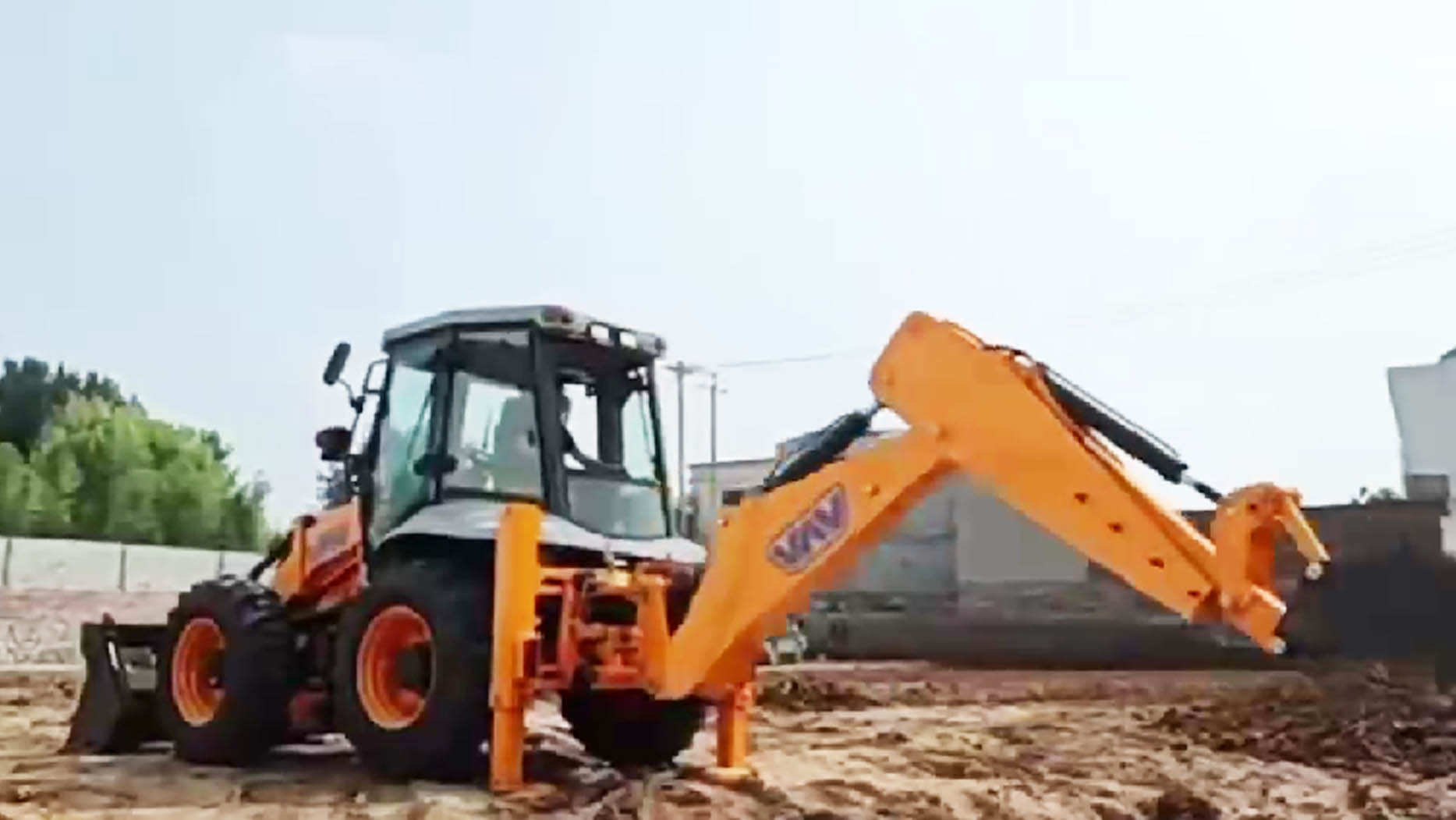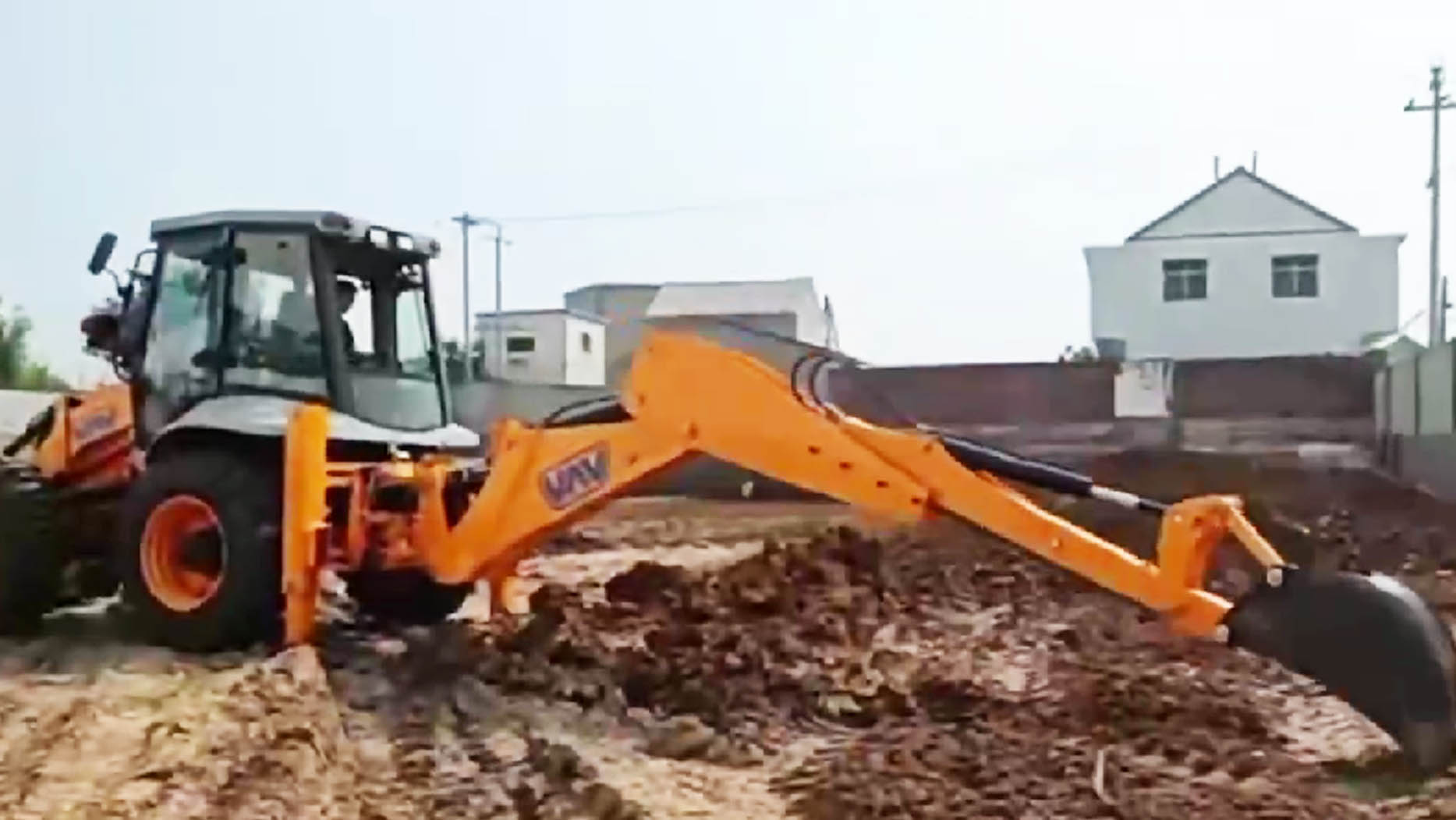The casual observer might occasionally conflate various large vehicles seen on construction sites. The sight of a backhoe loader driving down a road or operating on a job site can sometimes lead to a misconception: is it a truck? While a backhoe loader, often abbreviated as a TLB (Tractor-Loader-Backhoe), possesses wheels and can traverse roads, a deeper technical analysis reveals that it is fundamentally not a truck in its primary classification, design, or intended purpose.
This technical article will meticulously break down the characteristics of both a backhoe loader and a truck, highlighting their distinct design philosophies, primary functions, operational environments, and legal classifications. We will illustrate these differences by referencing examples such as the 388 backhoe and the 388-H backhoe, underscoring why, despite some superficial similarities, a backhoe loader firmly belongs to the category of heavy equipment or construction machinery, not road transport vehicles.
Understanding the "Truck": A Vehicle of Transport
To establish the distinction, we first need a clear definition of a "truck." In general terms, a truck is a motor vehicle designed primarily for transporting cargo or goods over distances, typically on established road networks. Key characteristics of a truck include:
Primary Function: Haulage: The fundamental purpose of a truck is to move materials from one point to another. This cargo can be anything from consumer goods in a semi-trailer to gravel in a dump truck.
Cargo Capacity: Trucks are designed with a dedicated area for carrying a load, such as a bed, a cargo box, or a fifth wheel for towing a trailer.
Road-Oriented Design: Trucks are built for sustained travel on paved roads and highways. Their chassis, suspension, braking systems, and tires are optimized for this environment, prioritizing speed, fuel efficiency over distance, and smooth ride for cargo and driver.
Legal Classification: Legally, trucks fall under vehicle codes designed for road transport, requiring specific licenses (e.g., Commercial Driver's License - CDL), adhering to weight limits per axle, and complying with regulations concerning vehicle dimensions, emissions, and safety features for public road use.
Specialized Variants: Even specialized trucks like dump trucks or concrete mixers, while having specialized bodies, still maintain their primary function of transport. A dump truck moves material from point A to point B; the "dump" function is a means to discharge the transported cargo.

Understanding the "Backhoe Loader": A Machine of Work
A backhoe loader (TLB - Tractor-Loader-Backhoe) is a multi-purpose piece of heavy equipment or construction machinery designed primarily for performing work functions at a job site, rather than solely transporting materials over long distances. As its name implies, it integrates three core components onto a single chassis: a tractor base, a front-end loader, and a rear-mounted backhoe.
Key characteristics that define a backhoe loader include:
Primary Function: Work (Digging, Loading, Moving): The backhoe loader's raison d'être is to execute specific tasks that manipulate the earth or materials on a localized site.
Backhoe: The rear attachment is for precision digging, trenching, and excavation.
Loader: The front attachment is for scooping, lifting, and loading materials onto other vehicles or moving them short distances.
Tractor: Provides the mobile platform for these working attachments.
Integrated Tool Design: Unlike a truck that carries a separate load, the backhoe loader's "payload" is integrated into its design – the bucket and the digging arm are integral parts of the machine's operational capability.
Off-Road/Job Site Orientation: While backhoe loaders are wheeled and can travel on roads, their design is optimized for rugged, uneven, and often soft terrain found on construction sites, farms, and industrial yards. Their chassis, heavy-duty axles, robust tires (often agricultural or industrial tread), and ground clearance are built to withstand the stresses of digging and lifting, not high-speed highway travel.
Limited Transport Capacity: The primary purpose of the front loader is to load material into another vehicle (like a dump truck), not to transport large quantities of material itself over significant distances. While it can move materials around a job site, its internal transport capacity is limited to what its bucket can hold and is not its main design goal.
Operational vs. Transport Speed: Backhoe loaders operate at relatively low speeds compared to trucks. Their maximum road speed is significantly lower than even a basic light-duty truck, reflecting their design for power and torque in working applications, not rapid transit.
Legal Classification: Backhoe loaders are classified as "heavy equipment," "construction machinery," or "off-road vehicles" for tax, registration, and operational purposes. While they may need permits for road travel, these are for the movement of oversized equipment, not for their classification as a commercial transport vehicle. Operator licensing for a backhoe typically falls under equipment operation certifications (e.g., OSHA, specific operator training), not a standard CDL.
 Direct Comparison: Backhoe Loader vs. Truck
Direct Comparison: Backhoe Loader vs. Truck
Let's put the two side-by-side to highlight the fundamental differences:
Illustrative Examples: The 388 Backhoe and 388-H Backhoe
Consider the 388 backhoe and the 388-H backhoe. These models, typically referring to mid-sized backhoe loaders, perfectly embody the characteristics of heavy equipment, not trucks.
388 Backhoe (Standard Configuration):
This machine's design prioritizes hydraulic power for its digging arm and front loader. Its engine is tuned for high torque at lower RPMs to handle excavation and lifting forces, not sustained high-speed travel.
The chassis is built to withstand the immense twisting and lifting forces generated when digging hardened soil or lifting heavy objects.
The tires, often large, industrial, and lugged, are designed for traction on dirt, gravel, or soft ground, not for fuel-efficient highway mileage.
While it can drive itself to a nearby job site, its fuel consumption and wear on components would be prohibitive for long-distance transport compared to a dedicated flatbed truck. Its internal "cargo" capacity (what fits in the loader bucket) is minuscule compared to even a small dump truck.
388-H Backhoe (Enhanced/Heavy-Duty Variant):
The "H" likely indicates a more robust, higher-capacity, or extended-reach version of the 388. This enhancement further emphasizes its role as a work machine.
Improvements would focus on greater digging depth, higher lift capacity, increased breakout force, or improved hydraulic performance – all work-related functions.
It might be even heavier, making its transport characteristics less like a truck and more like specialized heavy haulage. The larger size and power increase its effectiveness as a digger and loader, reinforcing its status as construction machinery.
 Neither the 388 backhoe nor the 388-H backhoe possesses a design or purpose that aligns with the definition of a truck. They are tools for earthmoving and material manipulation at a site, not vehicles for transporting goods between sites as their primary function.
Neither the 388 backhoe nor the 388-H backhoe possesses a design or purpose that aligns with the definition of a truck. They are tools for earthmoving and material manipulation at a site, not vehicles for transporting goods between sites as their primary function.
The Role of Transportation for Backhoes:
Ironically, because backhoe loaders are not trucks, they often rely on trucks for their long-distance transportation. A large backhoe loader moving across states or even long distances within a single state will almost certainly be transported on a lowboy trailer pulled by a heavy-duty semi-truck. This logistical necessity further highlights the functional distinction: one performs work at the destination, the other transports to the destination.
Conclusion: A Clear Categorical Divide
In conclusion, despite having wheels and the ability to move, a backhoe loader is definitively not a truck. A truck is a vehicle designed for the primary purpose of transporting goods over distances, typically on roads. A backhoe loader, often known by its TLB acronym (Tractor-Loader-Backhoe), is a piece of heavy equipment whose primary purpose is to perform work functions such as digging, loading, and moving materials within a localized job site.
The distinct design of its chassis, its specialized hydraulic work attachments (the loader and backhoe), its operational speed range, and its legal classification all underscore its identity as a versatile construction machine. Examples like the 388 backhoe and 388-H backhoe perfectly illustrate this distinction: they are powerful, multi-functional tools for manipulating the earth, designed for the rigors of the construction site, not for the efficiency of long-haul transport. Understanding this categorical difference is essential for accurate communication, proper equipment selection, and ensuring safety in the dynamic world of heavy machinery.
Post time:May.22.2025
